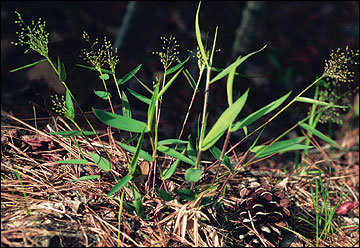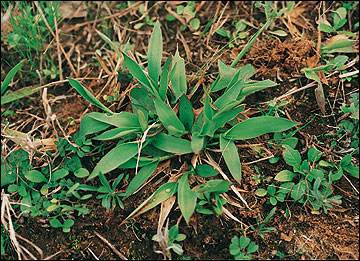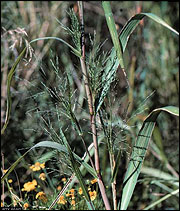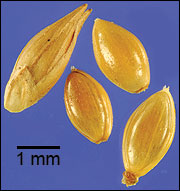Panic grasses
- Panicum spp., Dicanthelium spp.
- Fall panicum, Proso millet, Witch grass
Grass
 An open, sprawling panicle seed head is typical of the panic grasses.
An open, sprawling panicle seed head is typical of the panic grasses.
©Ted Bodner, USDA-NRCS Plants Database

Many species of panic grasses provide cover and food to bobwhites and other wildlife. Scribner's panic grass is a common species throughout the Midwest.
The Samuel Roberts Noble Foundation, Ardmore, Oklahoma
Description
More than three dozen species of panic grass are commonly found across the Midwest. Both annual and perennial species occur. Seeds are football-shaped and borne on a sprawling, panicle-shaped seed head. The leaves of panic grasses resemble flags along the stem.
Use by bobwhites
Bobwhites readily consume panic grass seeds, which are larger than those of many other grasses. Seeds of the shorter species occur at the preferred peck-height for bobwhites, which may contribute to their frequent occurrence in bobwhite diets. Most species form a minor component of the plant community, but serve to increase diversity and habitat structure. Proso millet is often planted as a food plot crop for quail and doves and produces a great deal of seed and a structure conducive to brooding and feeding. Bobwhites may also roost in panic grass stands of sufficient height.




